Excerpts from Jim Conrad's
Naturalist Newsletter
entry dated May 30, 2022, issued from near Tequisquiapan, elevation about 1,900m (6200 ft), ~N20.57°, ~ W99.89°, Querétaro state, MÉXICO
NARROWLEAF GLOBEMALLOW
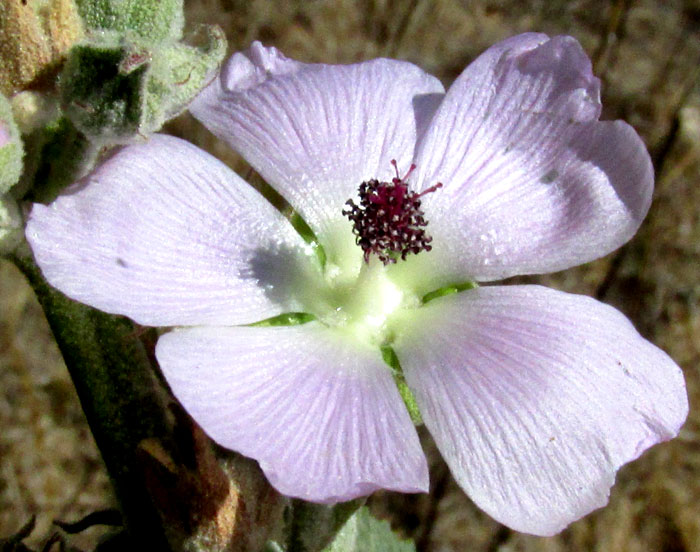
Blossoms like the above can be seen here the year round, though they're fairly small, about 17mm across (2/3 inch) and most folks don't notice them. Another reason people miss them is that the plants are abundant weeds, and people usually don't look closely at weeds. On the plant below -- an unusually tall one about 2.3m tall (8 ft) -- they hardly show up.
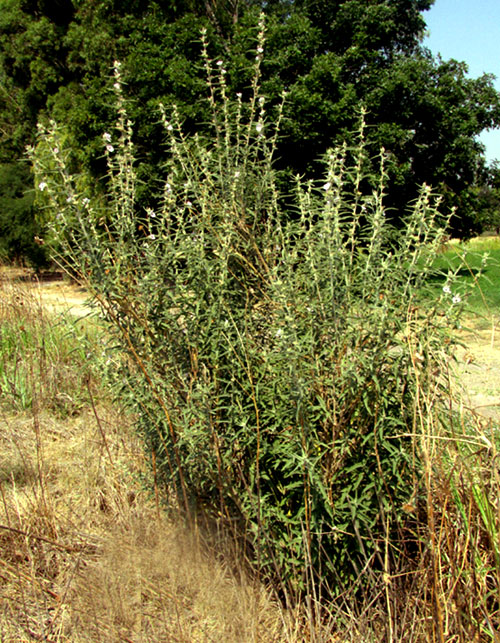
Blossoms are produced close to the main stem, and leaves are narrow. A leaf growing halfway up the stem is shown below:
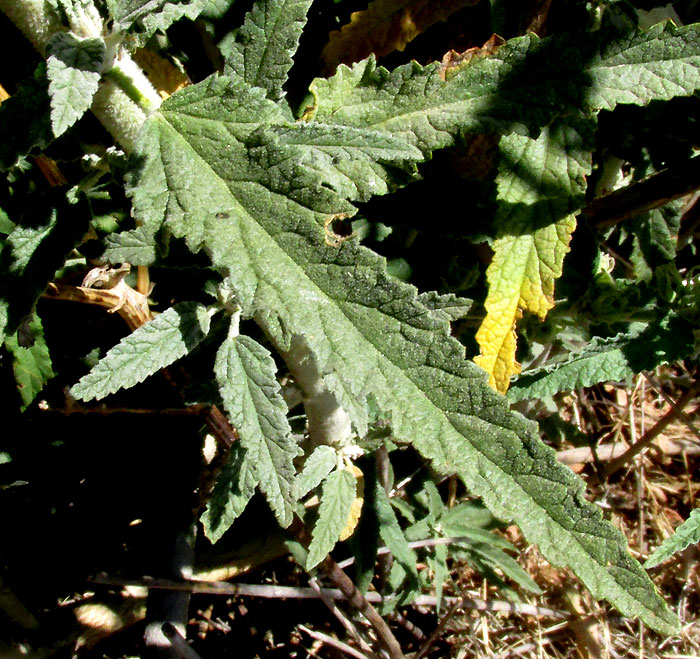
The stems and leaves are covered with short, branched, star-shaped or "stellate" hairs. Below they thickly cover a leaf's undersurface:
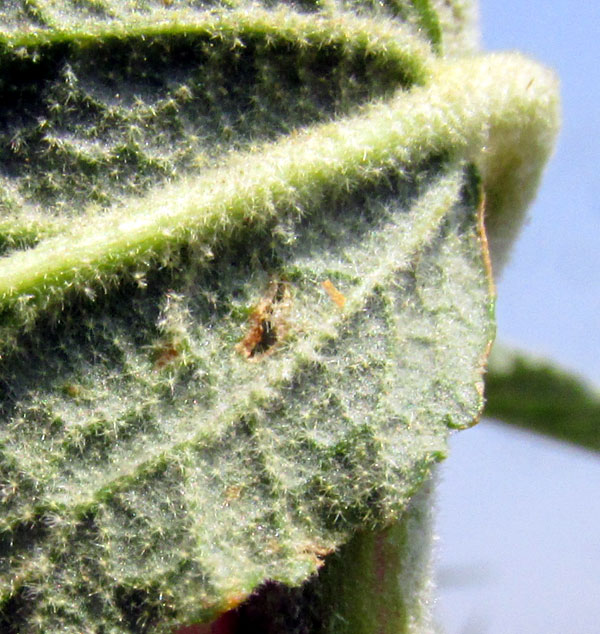
Such hairs give the flower's calyx a mealy appearance:
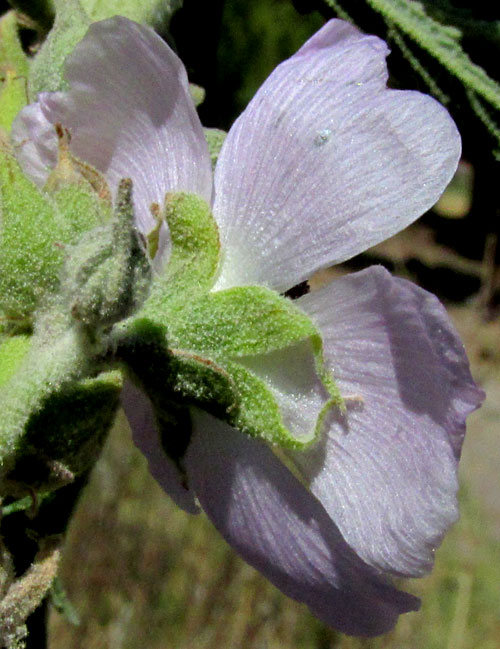
Once the flowers are pollinated, the corolla shrivels and falls off, leaving behind a special kind of small, ball-shaped fruit known as a schizocarp. Schizocarps are non-fleshy fruits that at maturity develop several distinct compartments connected together at the fruit's center, with each compartment containing one or a few seeds. Usually these compartments split to release the seeds. Below you can see one of this plant's mature, seed-dispersing schizocarps.
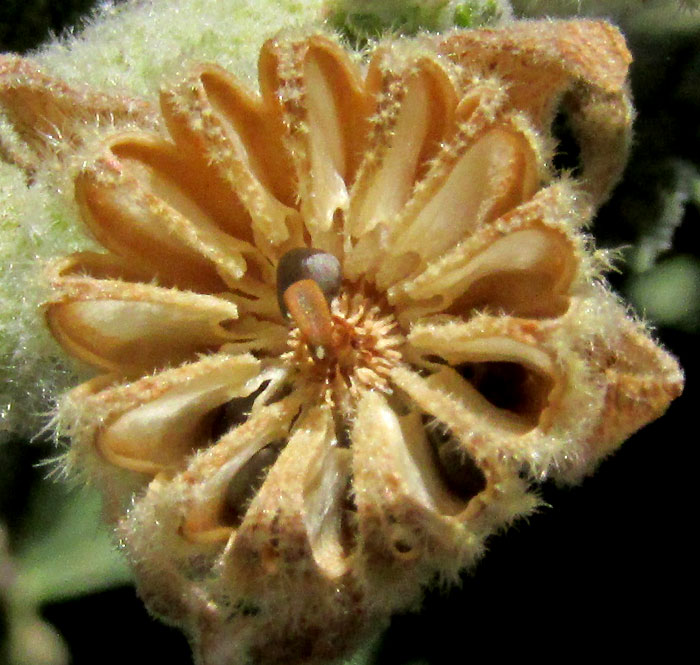
The flattish, dark thing near the above picture's center is a seed, and in several of the lower compartments seeds can be seen still in their compartments. In this species, each compartment produces one to three seeds, but the number varies from species to species.
If you know your wildflowers and weeds you won't be surprised by the above schizocarp's appearance, because they're produced by many species in a commonly encountered plant family. And if you noticed the flower's structure at the top of this page, already you know which family that is. With the blossom's many pollen-producing stamens united by their white stem-like filaments into a cylinder around the slender style, we just have to be dealing with the famous Hibiscus Family, the Malvaceae -- home to about 244 genera and approximately 4225 known species.
The fruits of all those Hibiscus Family species can fairly neatly be divided into two main fruit types. One type is capsular, in which the fruit itself splits open to release seeds (such as the okra fruit and cotton boles), and the other is the schizocarp, in which various compartments split open individually.
The plant in our pictures is the Narrowleaf Globemallow, SPHAERALCEA ANGUSTIFOLIA. It bears an English name because it's native to much of the semiarid western and central US, as well as western and central Mexico south to about Mexico City. You see Narrowleaf Globemallow along roadsides, in abandoned fields, inside towns and generally most any weedy area.
Traditionally, the Otomí people of this area used the plant medicinally against cancer, and today it's often called Hierba del Cáncer. Other groups have other uses, and among many campesinos it's regarded as good food for goats, and as a forage plant in general. It's also been documented used as a pesticide.